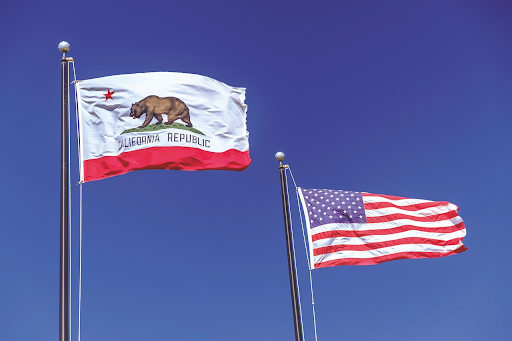Small businesses today face a challenging reality: competition is everywhere. Whether they’re selling handcrafted jewelry, offering home repair services, or launching niche software solutions, new players must compete not only with local rivals but also with established online brands. In this crowded environment, simply existing online is not enough — success depends on how strategically a company promotes itself.
Strategic digital promotion isn’t about chasing trends. It’s about using data-driven marketing techniques to reach the right audience, at the right time, with the right message. When done well, it can level the playing field for emerging businesses and drive meaningful, sustained growth.
Understanding the Digital Landscape
The digital world is constantly evolving. Algorithms shift, new platforms rise, and consumer behaviors adapt almost overnight. For small enterprises, this can feel overwhelming — but it also presents an opportunity.
Digital promotion allows even small companies to compete alongside industry giants. Search engines, social media, and online advertising offer visibility that was once out of reach. The key is understanding where your audience spends time and how to meet them there with purpose.
For example, optimizing for local SEO ensures that a neighborhood bakery appears when someone searches “fresh bread near me.” Meanwhile, targeted social media campaigns allow that same bakery to promote its weekend specials directly to nearby users. These digital touchpoints build brand familiarity, trust, and loyalty — the foundation for growth in a saturated market.
Building a Strong Online Identity
Before running ads or posting content, a small business must first establish its identity. This involves defining a clear message, tone, and visual presence that resonates with its target audience.
Consistency is key. A well-designed website should mirror the same values expressed on social media pages, newsletters, and blog posts. Every interaction with a customer should reinforce the same brand message. This cohesion helps consumers remember and trust the business — a vital factor when competing with larger companies.
An effective online identity also extends to storytelling. People connect with authenticity. Sharing the story behind the brand, the challenges faced, and the vision that drives the company adds human value to the digital experience.
Data-Driven Marketing: The Engine Behind Strategic Growth
Data is the foundation of smart digital promotion. By tracking user behavior, engagement rates, and conversion metrics, small businesses can make informed decisions about where to focus their marketing efforts.
For instance, analyzing which keywords attract the most qualified traffic helps businesses refine their SEO strategy. Similarly, studying social media insights can reveal which content formats — such as videos, carousels, or customer testimonials — generate the strongest response.
One critical aspect of data-driven marketing is flexibility. Markets change quickly, and what worked last quarter might not perform the same today. Businesses that monitor their campaigns closely and adapt accordingly often stay one step ahead.
As Sure Oak emphasizes in its SEO strategies, successful digital growth is built on continuous learning, optimization, and long-term focus rather than short-term gains.
Balancing Paid and Organic Growth
Digital promotion works best when both paid and organic efforts complement each other. Paid ads can bring immediate visibility, while organic content builds authority and trust over time.
For example, a small eco-friendly apparel brand might run paid Google Ads to attract new customers, while simultaneously publishing blog articles that educate readers on sustainable fashion practices. The ads bring traffic; the content builds credibility. Over time, that credibility translates into organic growth as the website gains visibility and backlinks.
According to HubSpot, companies that blog regularly receive 55% more website visitors than those that don’t. This illustrates how consistent, high-quality content creation can compound results and strengthen other digital efforts.
Leveraging Social Media and Community Engagement
Social media is no longer optional — it’s an essential component of modern marketing. However, success here isn’t about posting endlessly; it’s about engaging strategically.
Each platform serves a different purpose. LinkedIn may be ideal for B2B connections, while Instagram suits visually appealing products. The most effective brands choose their platforms wisely and focus on authentic interactions rather than sheer follower count.
Community building also plays a powerful role. Responding to comments, participating in local discussions, and creating content that sparks conversation helps brands establish credibility. When people feel heard, they become advocates — and word-of-mouth remains one of the strongest marketing tools available.
The Role of SEO in Long-Term Visibility
Search Engine Optimization (SEO) continues to be one of the most sustainable ways for small businesses to grow online. While paid ads provide quick results, SEO lays the groundwork for long-term success.
A well-optimized website ensures that search engines can easily understand and rank its content. This includes optimizing technical elements like site speed, mobile usability, and metadata, along with publishing content that genuinely answers user questions.
Small enterprises often benefit from focusing on local SEO first. Ranking in local searches not only drives relevant traffic but also attracts customers ready to take immediate action. For instance, when someone searches for “best coffee shop near me,” Google’s algorithm prioritizes local results. Appearing in that list can make all the difference for small cafés or service-based companies.
Measuring Success and Refining Strategies
No marketing plan is complete without tracking performance. The digital landscape makes it easier than ever to measure what’s working — and what’s not.
Metrics such as conversion rate, cost per click, and customer lifetime value reveal the effectiveness of different campaigns. Yet, numbers alone don’t tell the whole story. Understanding why certain efforts succeed (or fail) helps refine future strategies.
Tools like Google Analytics, social media insights, and email engagement data provide valuable guidance. The more a business understands its audience’s behavior, the more precise its future marketing can become.
Conclusion
In an increasingly crowded digital marketplace, small businesses can’t rely on luck or intuition. Growth requires a strategic, deliberate approach to online promotion. From developing a clear brand identity to balancing paid and organic efforts, every decision contributes to long-term expansion.
The beauty of strategic digital promotion lies in its accessibility. With the right data, consistent storytelling, and thoughtful execution, even the smallest enterprise can compete with industry leaders — not by outspending them, but by outsmarting them.











